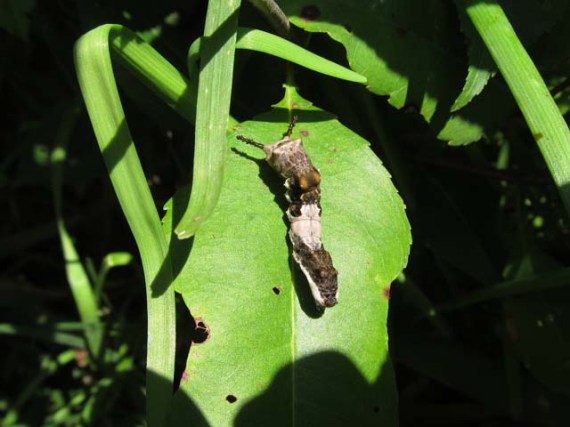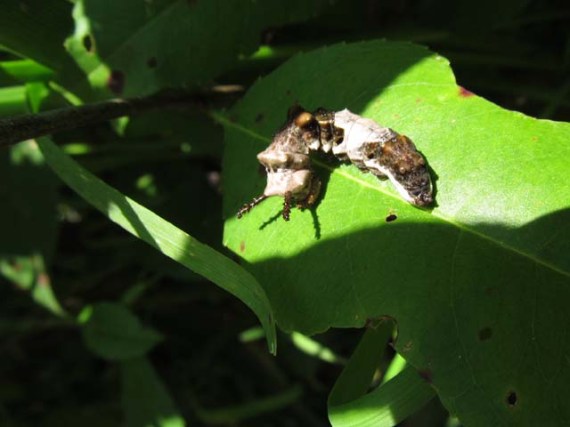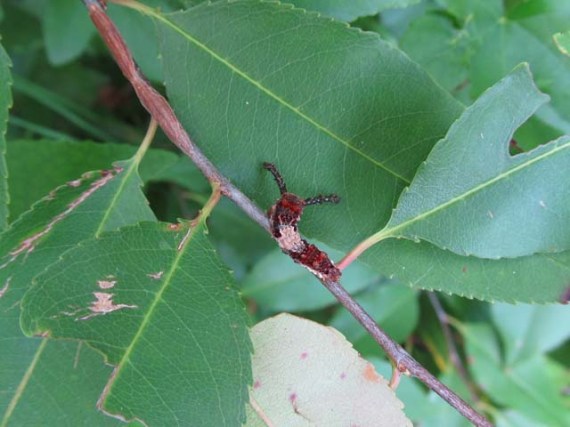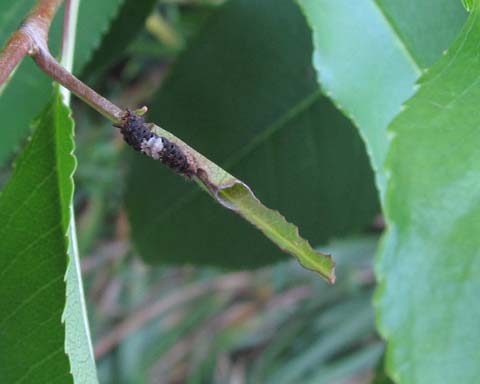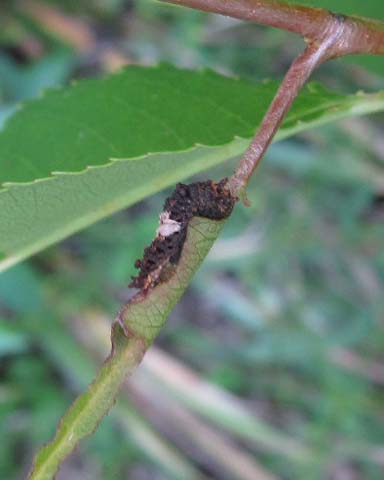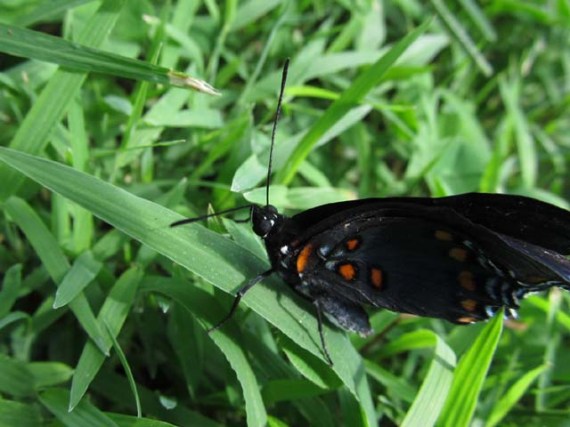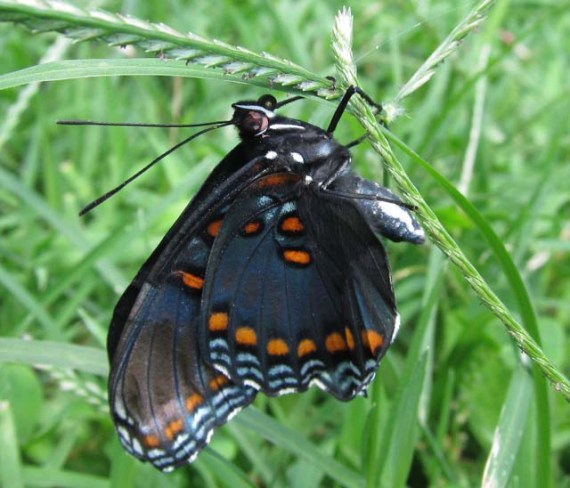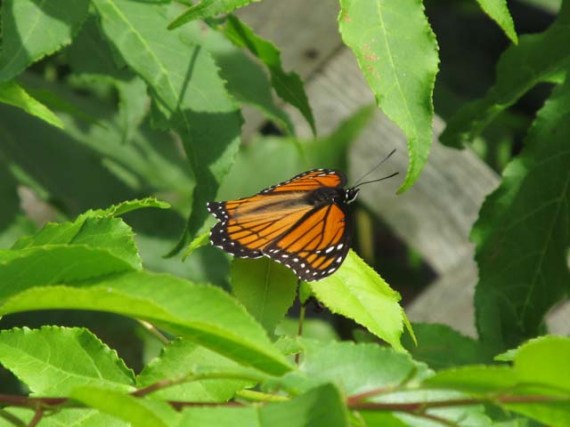I always find it more fun to learn from observations than from a book. The information stays with me much longer when I have the memory and the direct observation.
Some caterpillars, like this red-spotted caterpillar, mimic bird droppings.
I doubt if this would appear very appetizing to a bird.
The caterpillars of the red-spotted purple and viceroy butterflies closely resemble each other. I don’t understand why this one is red.
Red-spotted purples lay their eggs in wild cherry, apple, and willow trees.
Viceroys lay theirs in willow, wild cherry and poplar.
The adults of both species feed on flowers and also at sap flows, decaying fruit, carrion and animal droppings.
Both species overwinter as partially-grown caterpillars. The 4th instar caterpillar cuts off all of a leaf except near the base and spins silk back and forth across the top of it. As the silk dries, it curls the remaining leaf into this tube.
The half-inch caterpillar spends the winter in diapause (a pause in its development). It might come outside the tube on an overly-warm winter day.
(I wrote this blog in the fall. Predators got the caterpillars, so, I didn’t get to see if any survived winter.)
This red-spotted purple emerged from its chrysalis (which I didn’t witness).
Apparently, it couldn’t, or didn’t get in an upside-down position so its wings would fully open before they dried. It kept trying.
It must have flown off, because I didn’t see it again.
Viceroy butterflies mimic the monarch butterfly. They have an extra black band on their hindwing that the monarchs don’t. Monarch are bigger, and their wings are shaped differently.
